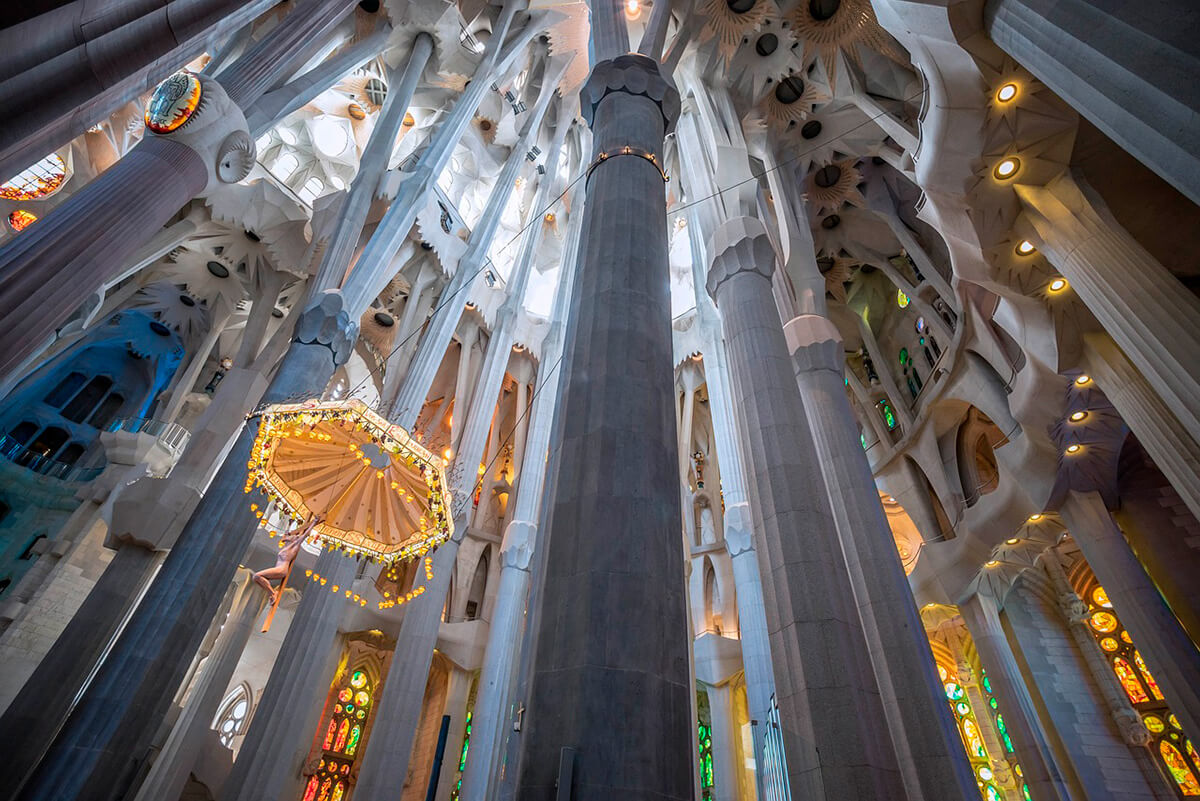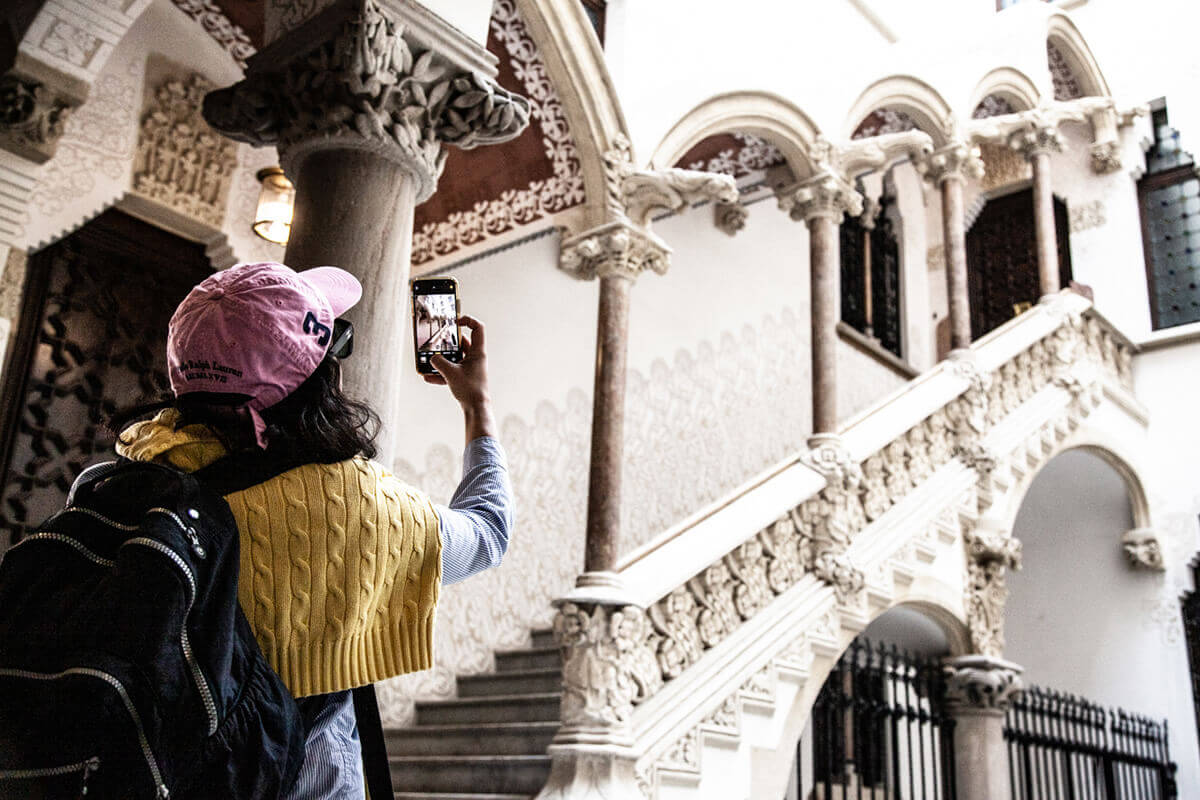
Meet Antoni Gaudí, Barcelona’s Greatest Architect
How much do you know about the famous Catalan architect Antoni Gaudí? You probably know the obvious: He’s the mastermind behind the still unfinished Sagrada Família, the most-visited attraction in all of Spain. There are more architectural marvels by Gaudí for you to explore around Barcelona! And there’s more to learn about the man himself.
Let’s learn some interesting facts about Antoni Gaudí’s life, work, and presence in Barcelona.
Travel tip: Explore the works of Gaudí and other modernist architects in Barcelona on foot with our architecture walking tour.
Who was Antoni Gaudí?
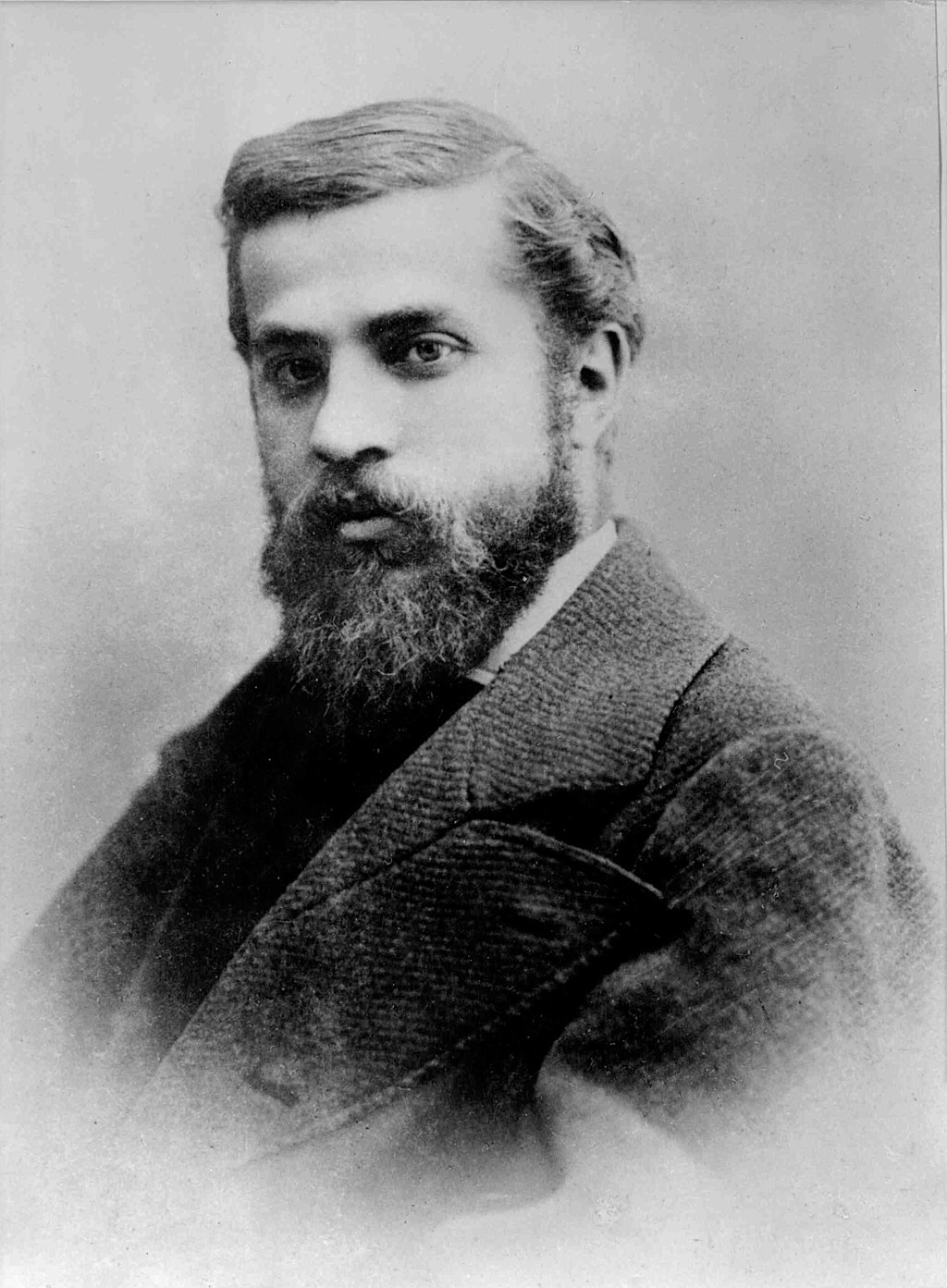
Born to a family of metalsmiths in Reus, Spain, a city about 60 miles from Barcelona, Gaudí excelled in subjects like geometry as a boy. It might have been a hint that he would one day be using geometrical shapes to design whimsical buildings and structures.
At 16, he decided to study architecture and moved to Barcelona to attend the school of architecture, where his teachers weren’t sure what to make of him. Was he a genius? Was he a madman? They gave him a degree, figuring that soon time and public opinion would decide.
Gaudí started to get work rather quickly, beginning with a commission from the Barcelona City Council to design lamp posts in Plaça Reial (also known as the Royal Square or, in Spanish, Plaza Reial) in the Gothic Quarter, never-completed public kiosks (also known as the Girossi newsstands), and La Obrera Mataronense in Mataró. His first major commissioned work, Casa Vicens in Barcelona’s Gràcia neighborhood, gained him wider recognition.
This led to collaborations with the wealthy and, obviously, creative industrialist Eusebi Güell, who commissioned Gaudí to design Park Güell, Palau Güell, the Güell wine cellars, Güell pavilions, and the crypt of the church of Colonia Güell just outside of Barcelona.
It’s been suggested that a broken heart moved Gaudí to devote himself to his work and Catholic faith, which came together in his final project that he never saw to completion due to his tragic and untimely death: Sagrada Família. As he grew older, he left behind the fashionable dandy lifestyle of his youth and lived frugally. In fact, some accounts state that he was often mistaken for a beggar because of the tattered suits he wore in his later years.
Unfortunately, Gaudí died on June 10, 1926, three days after being hit by a tram because no one recognized him as the creator of the Sagrada Família; he received inadequate care because he was assumed to be a beggar. A large crowd gathered for his funeral, and he was laid to rest in the crypt of his unfinished masterpiece.
Timeline of Gaudí’s life
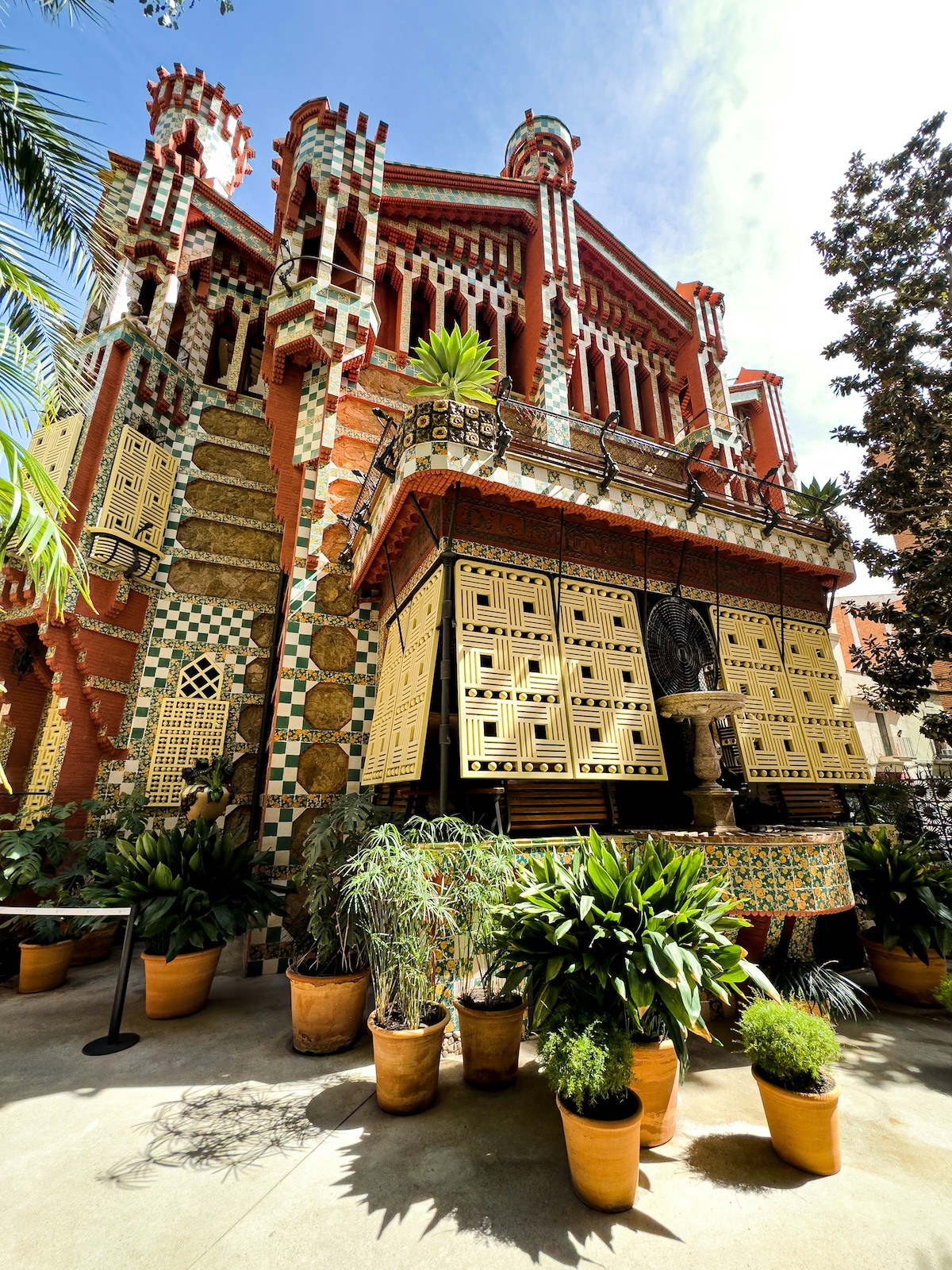
Here’s a quick timeline of Antoni Gaudí’ life.
- 1852: Antoni Gaudí i Cornet was born in Reus, Spain, from the Tarragona province of Catalonia on June 25.
- 1868-1878: Gaudí moved to Barcelona where he first studied teaching at the Convent del Carme, went on to complete his compulsory military service from 1875-1878, and graduated from the Barcelona Higher School of Architecture in 1878.
- 1878: Gaudí caught the attention of his long-time patron and collaborator Eusebi Güell, at the Paris World’s Fair with his modernist and functional design displays.
- 1883-1888: Casa Vicens was commissioned by the stockbroker Manuel Vicens i Montaner during what was known as Gaudí’s Orientalist period. During this time, his work was inspired by the Far East and Islamic-Hispanic art. Casa Vicens was the architect’s first building commission, but he also began work on the Sagrada Família.
- 1900-1914: After completing several commissions for Güell, Gaudí took on one of his most impressive projects yet: Park Güell. It was unsuccessful in its intended purpose — a residential estate for the wealthy — but it’s since become a popular tourist destination and park for locals, displaying Gaudí’s unique genius and aesthetic. Other buildings were also completed during this period, including Casa Batlló and Casa Milà that you’ll see on our architecture walking tour.
- 1915: Gaudí focused almost exclusively on the Sagrada Família, a commission he started at least 30 years earlier. Apparently he had no qualms about how long it was taking to finish.
- 1926: Gaudí dies at age 73 after being hit by a tram while on his daily walk.
What is Antoni Gaudí famous for?
It would be hard to imagine Barcelona without the whimsical buildings of Antoni Gaudí. The architect’s work has become synonymous with the Catalan capital, whether you’re traveling to see the Sagrada Família or Park Güell.
Here are some facts about these popular Gaudí tourist attractions.
1. Sagrada Família
The Sagrada Família is one of seven of Gaudí’s buildings that have been named UNESCO World Heritage sites.
Perhaps it’s only fitting that Gaudí is buried in the crypt of what ended up being his life’s work. Sagrada Família has been a work in progress since its construction began, and the complexity of the many sculptures and façades meant that Gaudí had to assemble a diverse team of professionals to bring his vision to life.
If you’re planning to visit Barcelona in the next 10 years, you might get to see Gaudí’s finished vision for the Sagrada Família. Since the pandemic delayed the 2026 target date — which would have seen the basilica completed in time for the 100th anniversary of the architect’s death — no new date has been decided.
2. Park Güell
Park Güell is also a UNESCO World Heritage site.
The park is the result of Catalan industrialist Eusebi Güell allowing Gaudí’s imagination to run wild. It was meant to be a housing community for rich families in Barcelona, but Güell and Gaudí were the only ones to buy plots of land and live there.
When you visit, you’ll see why Gaudí’s creation is sometimes called “a playground for the mind.” Gaudí wanted to stay true to the landscape of the area, so all of the park’s structures mimic or seem to grow from it.
3. Casa Batlló
Another UNESCO World Heritage site, Casa Batlló is a must-see building in Barcelona. It’s great if you can go inside, but — like so many of Gaudí’s creations — even the exterior is a work of art.
There are two interpretations of what the façade of Casa Batlló represents: One is that it symbolizes the legend of Saint George (Sant Jordi in Catalan), the patron saint of Catalonia, who slayed a dragon to save a Princess. The other is that Gaudí was playing with the shapes and colors you’ll find in an aquatic landscape.
You’ll have to visit Casa Batlló to decide what you see in Gaudí’s design.
4. Casa Milà
Popularly known as La Pedrera because it resembles a “stone quarry,” Casa Milà is the Gaudí work that was obviously inspired by nature. Some people think Gaudí intended the house to look like a snowy cliffside.
Before devoting himself entirely to constructing the Sagrada Família, this was the last commissioned work Gaudí took on. The project was controversial because it was over budget and against building codes, which didn’t please the Milà family, but like so many of his other works, it’s been embraced in the years since. It’s now a UNESCO World Heritage site too.
8 interesting facts about Antoni Gaudí
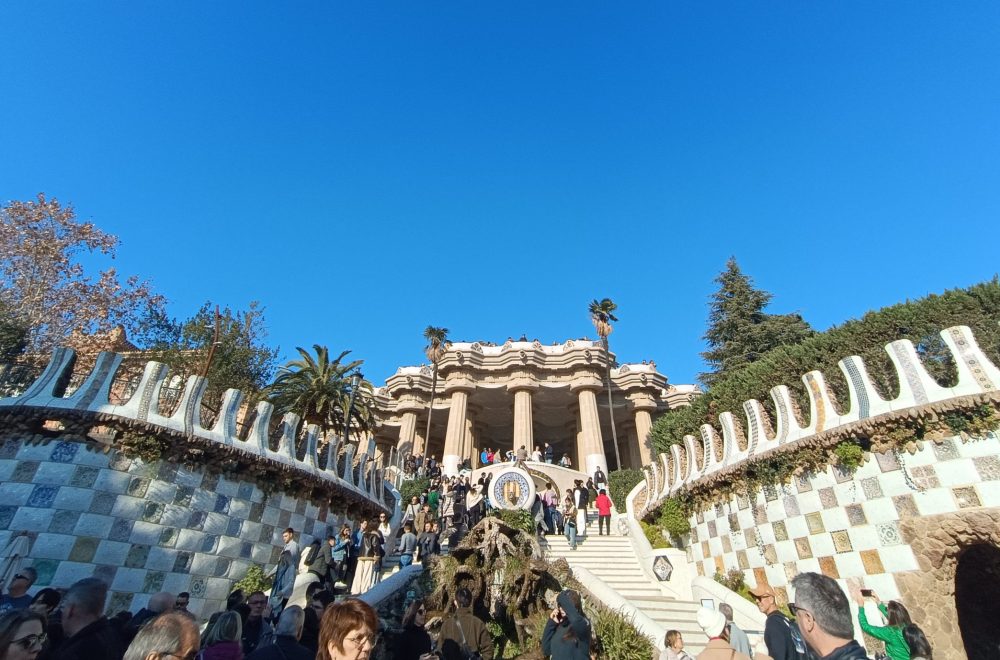
Now that we know why Antoni Gaudí is famous, let’s learn some facts you probably didn’t know about the man himself.
1. Gaudí’s birthplace is unknown
We don’t know exactly where Gaudí was born, but his birthplace is believed to be in either Reus or Riudoms, which are towns in the Tarragona province of Catalonia. His identification documents for school list Reus as his birthplace, but Gaudí is also known to have said that he was born in Riudoms. The mystery lives on!
2. Gaudí was proud to be Catalan
Gaudí was extremely proud of his Catalan heritage, but he wasn’t politically active in Catalonia’s fight to be independent from Spain. His attachment was cultural: he preferred speaking the Catalan language, and he incorporated elements of his cultural identity into his works. While he stayed out of politics, he was active in demonstrations and was even beaten by authorities at a demonstration against banning the Catalan language.
3. Gaudí was sick all his life
Since childhood, Gaudí suffered from various illnesses, including rheumatism. Following the health and wellness theories of the time, he became a vegetarian at an early age and would often put himself through long fasts.
4. Gaudí’s teachers thought he was either a madman or a genius
At architecture school, Gaudí’s teachers didn’t know what to make of his unique talent and vision. The director of the program is believed to have said this: “I don’t know if we have awarded this degree to a madman or a genius; only time will tell.” Luckily, they graduated the Catalan mastermind, and time soon did tell that Gaudí was something of a genius.
5. As a young man, Gaudí was a dandy
A famous and slightly eccentric architect needs to dress the part, and Gaudí certainly did. To dress like a dandy meant that a man in the 19th century was well-groomed, wore expensive suits, and appreciated culture. Gaudí was classed as a “gourmand” (a person who enjoys eating good food) and frequently visited the theater and opera.
6. At the end of his life, he was mistaken for a beggar
In contrast to his young dandy days, Antoni Gaudí adopted a more frugal lifestyle in his later years. He dressed in tattered, worn-out suits that led people to think he was a beggar. When he was tragically hit by a tram in 1926, Gaudí was taken to the Hospital de la Santa Creu i Sant Pau where he was treated like a beggar. By the time he was identified as Gaudí, it was too late — he died three days later.
7. Dalí loved him, Picasso hated him
For years after Gaudí’s death in 1926, his work was ignored and criticized for being too ornate and even too imaginative.
It wasn’t until the 1950s that artists and architects began to revive his legacy, and one of these figures was the Surrealist artist Salvador Dalí. Soon, retrospectives of Gaudí’s work started to pop up, and Gaudí was considered a genius again.
But not by everyone.
Hate is a strong word, but the Spanish artist Pablo Picasso wasn’t enthusiastic about Gaudí’s work, mainly because of its religious symbolism
8. Gaudí didn’t mind that Sagrada Família remained unfinished
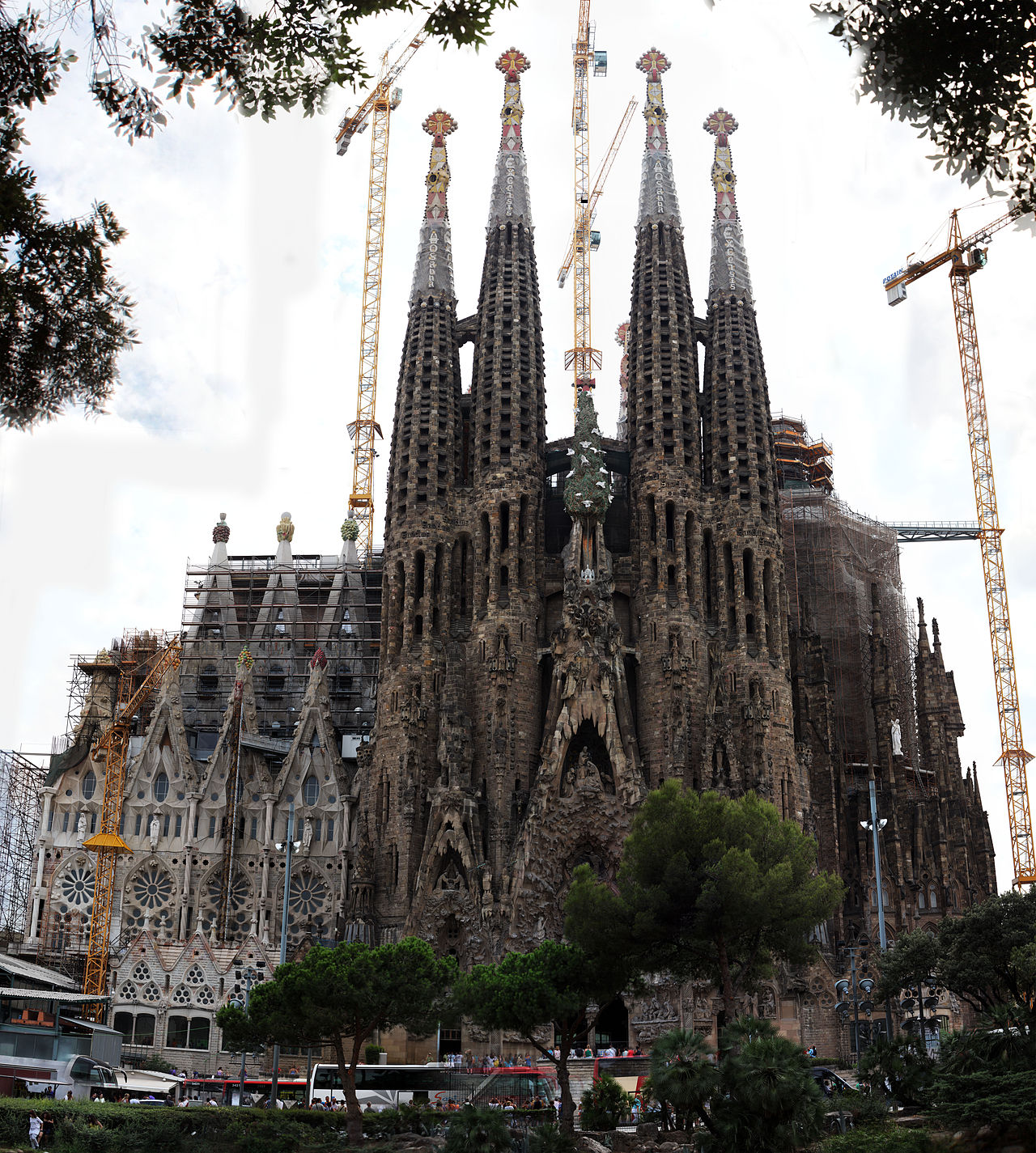
It was often pointed out to Gaudí that he was taking a lot of time on the Sagrada Família and that the construction might outlive him. Since he considered his main client to be God, this didn’t really bother him. “My client is not in a rush,” he said.
Of course Gaudí didn’t know that his life would come to end as suddenly as it did, or that the greatest work of his life would remain unfinished all these years later.
Learn more about Gaudí’s art
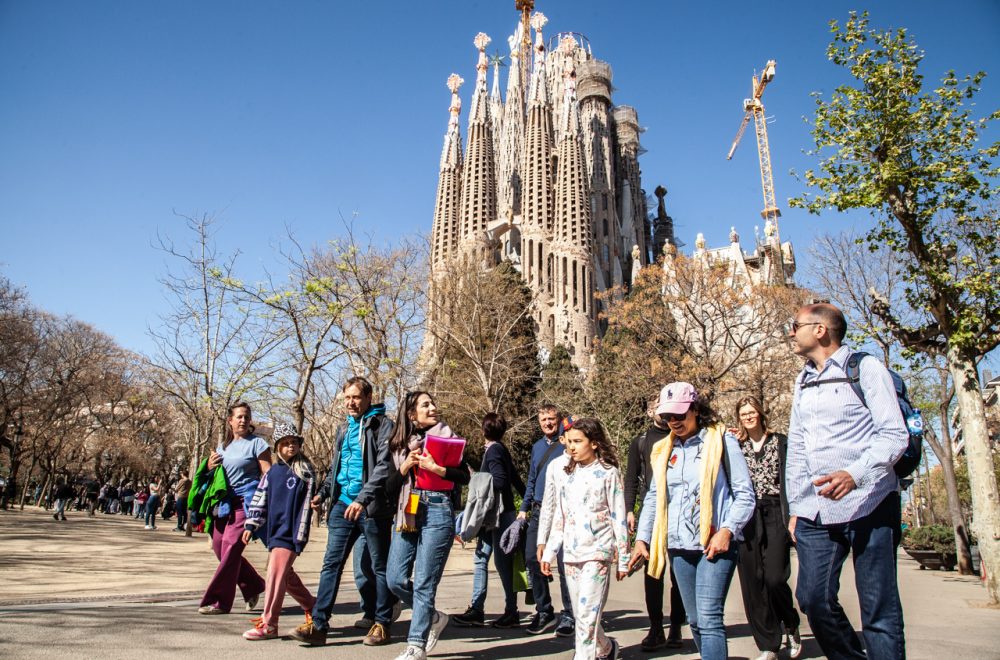
What better way to get to know Antoni Gaudí than through his work? Choose any of our Gaudí architecture tours to meet the man behind Barcelona’s most popular tourist destinations. You’ll learn everything you didn’t know about the man, his legacy, his architecture, and more from local experts who can’t wait to welcome you.
Ready to explore the best of Gaudí’s architecture?
